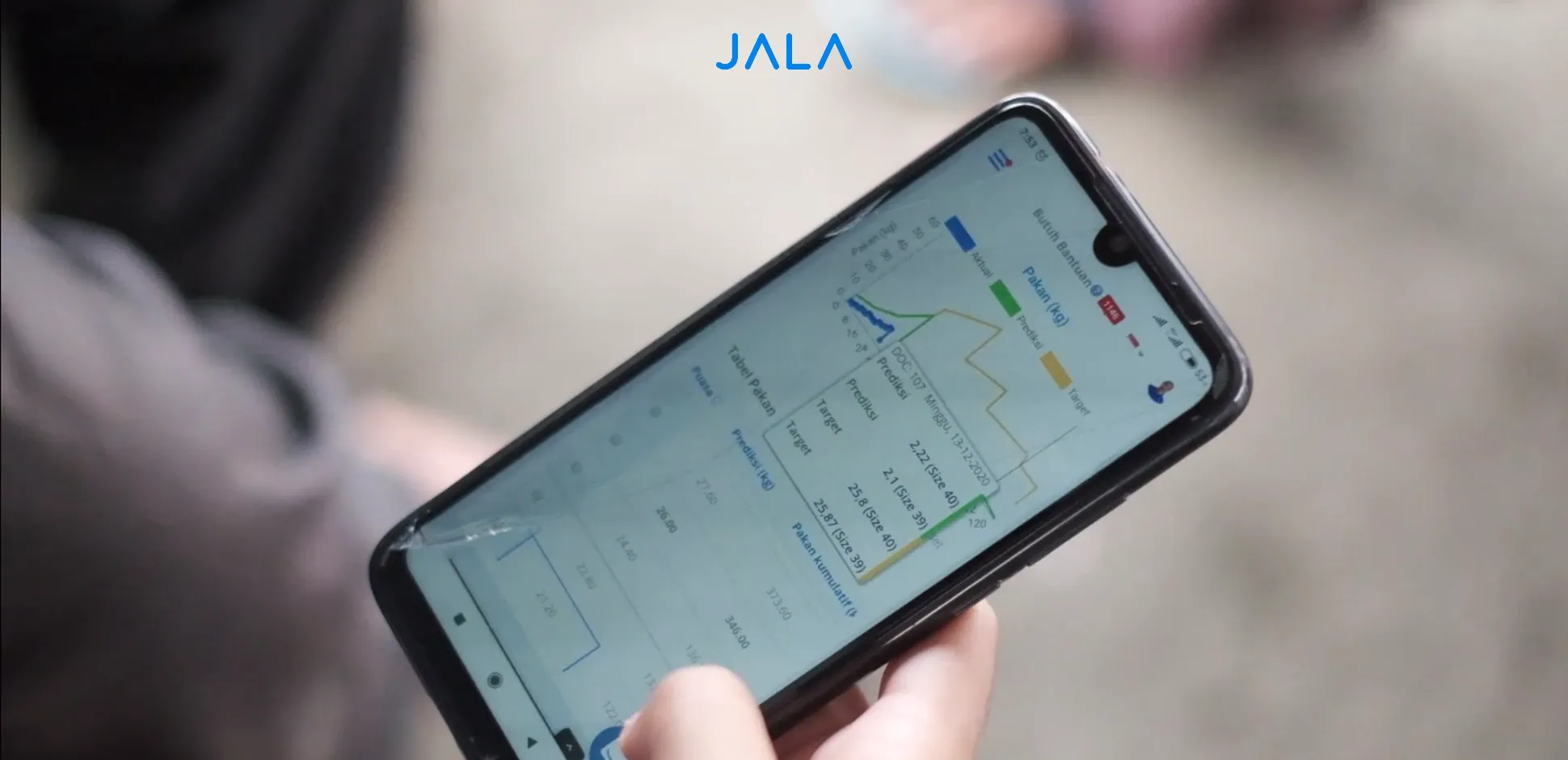
Success and failure in cultivating shrimp are two familiar experiences farmers have gone through. However, farmers are not always sure about the factors that cause their cultivation to fail, particularly if they apply similar procedures between cycles. For this reason, monitoring and historical data comparison play a crucial role for farmers to understand their cultivation condition and aim for success.
The Importance of Monitoring and Historical Data Comparison
In vannamei shrimp cultivation, regular recording and monitoring of cultivation data are essential for farmers to understand their farm condition. This is not just important for the current cycle, as complete historical data from previous cycles also serve as an important reference for farmers to compare between cycles and observe patterns in cultivation performance. Altogether, this helps them identify factors that influence success in the farm.
Case Study of Comparing Data from Two Cultivation Cycles
As a case study, suppose Mr. Jali found that the 9th sampling results from his shrimp pond at DoC 85 days are less satisfactory, although he managed to reach size 45 in DoC 86 during his previous cycle.
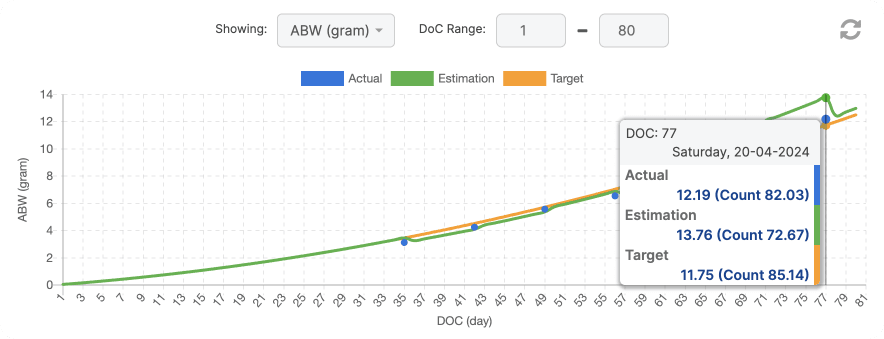
With the help of the growth graph on JALA App, Mr Jali can compare the growth of his shrimp from his current and previous cycles.
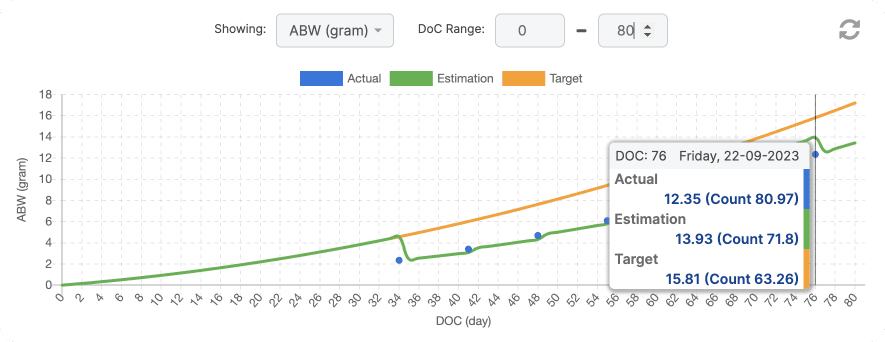
He also compared the feed graphs from both cycles, discovering that feed consumption in the previous cycle fell closer to the target. He inferred that feed consumption in this cycle is suboptimal due to extreme weather conditions.
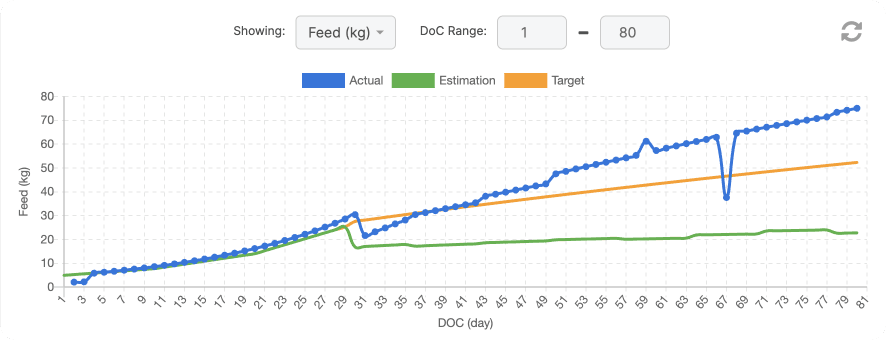
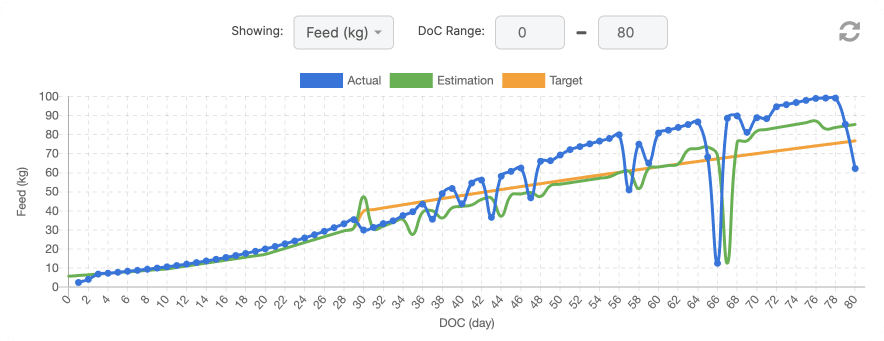
After checking several other parameters, Mr Jali found that there are differences in salinity and pH. In the current cycle, the drastic drop in salinity, particularly from the end of September to early October, might cause stress in shrimp.
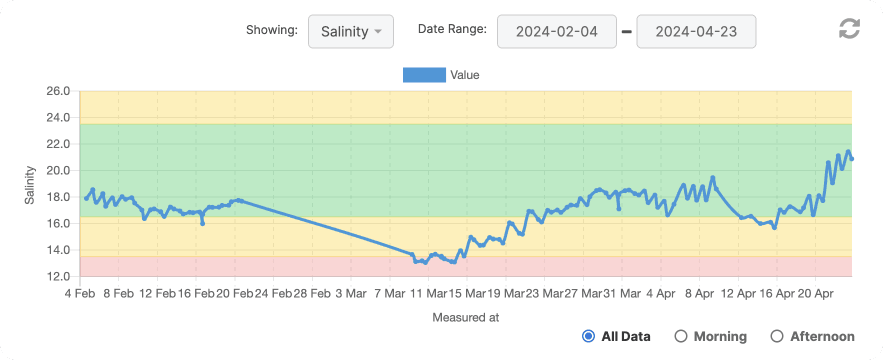
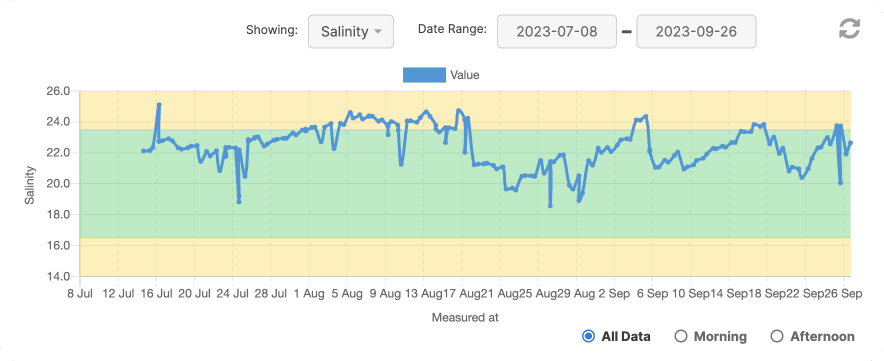
Meanwhile, comparing pH data allows him to discover that many pH measurements fall under the red zone, in which an overly low pH can adversely affect shrimp appetite and growth.
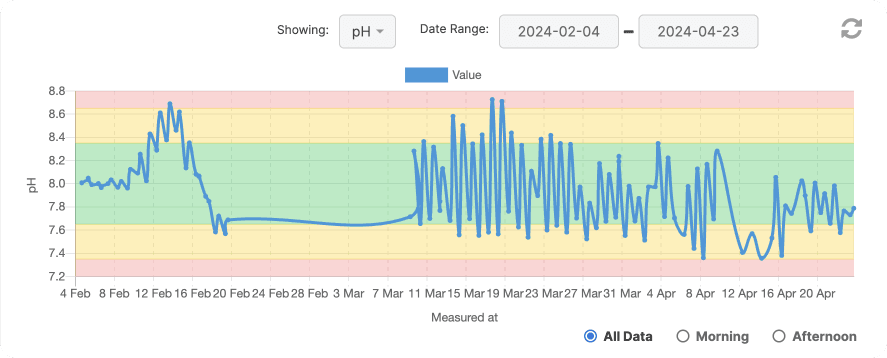
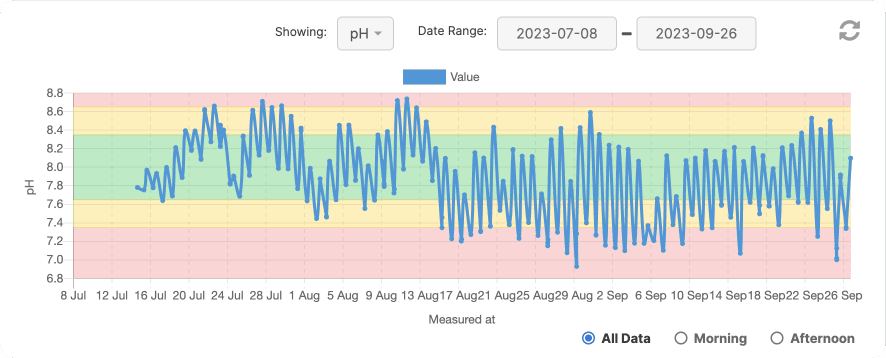
By comparing data from this cycle and the previous one, Mr Jali can identify the factors that may hinder his shrimp growth.
Evaluation and Next Steps
Although cultivations from different cycles implement the same SOP, factors such as changing weather conditions can affect water qualityhttps://jala.tech/blog/cultivation-tips/four-important-physical-parameters-of-water-quality-in-shrimp-farms and hinder shrimp growth. Moreover, changes in the type of shrimp fry and feed used may also cause these issues.
Based on the example from the case study, some steps Mr Jali can take are:
1. Increasing pH and maintaining its stability
The suggested pH value for shrimp ponds is 7.8-8.5. A pH value that is too low can be addressed by adding lime.
2. Maintaining salinity stability
A salinity level that is too low can decrease oxygen levels and increase water turbidity, while one that is too high can cause shrimp growth to slow down and FCR to increase. Salinity can be maintained by adding freshwater or seawater depending on its condition.
3. Paying attention to wind conditions
It’s true, strong winds can cause shrimp feed to be blown away. If feed consumption is suspected to decrease due to the feed being carried away by wind during extreme weather, a possible solution is to mix the feed with water so that it doesn't get blown away when being spread into the pond.
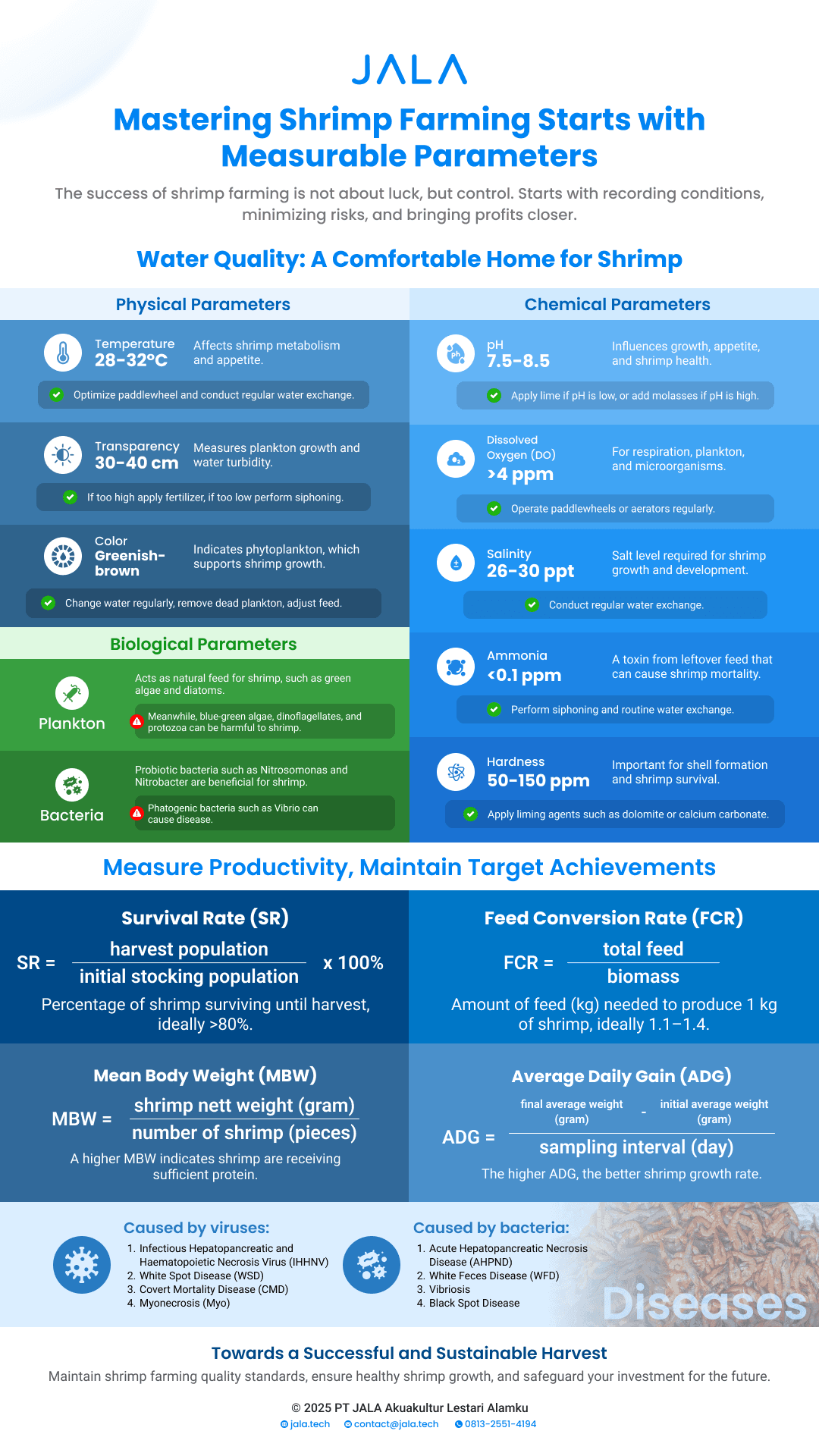
Conclusion
Poor shrimp farming performance can be solved through regular monitoring and comparing historical data from previous cycles. With complete data records, farmers can identify parameters that have declined and make the necessary adjustments.
To record and monitor cultivation more regularly and accurately, farmers can use JALA App. On JALA App, farmers can record cultivation conditions in detail and compare data between cycles.
Haven’t joined JALA App? Register yourself on app.jala.tech and download the mobile version from Google Play Store or App Store!





